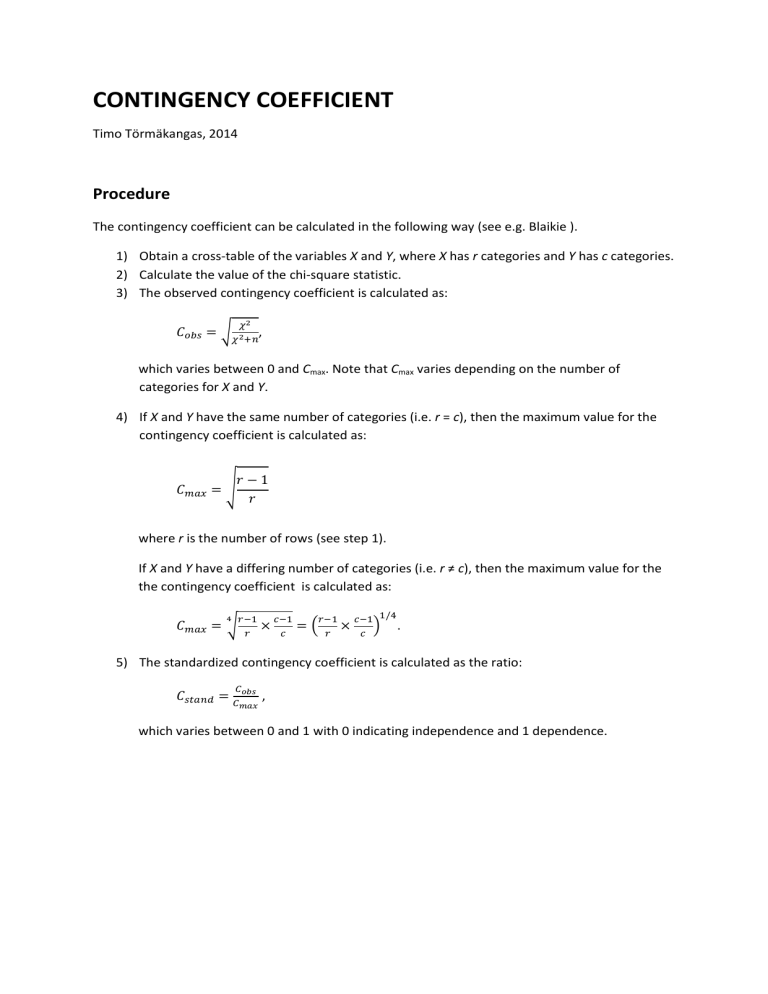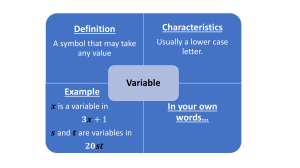
CONTINGENCY COEFFICIENT Timo Törmäkangas, 2014 Procedure The contingency coefficient can be calculated in the following way (see e.g. Blaikie ). 1) Obtain a cross-table of the variables X and Y, where X has r categories and Y has c categories. 2) Calculate the value of the chi-square statistic. 3) The observed contingency coefficient is calculated as: √ , which varies between 0 and Cmax. Note that Cmax varies depending on the number of categories for X and Y. 4) If X and Y have the same number of categories (i.e. r = c), then the maximum value for the contingency coefficient is calculated as: √ where r is the number of rows (see step 1). If X and Y have a differing number of categories (i.e. r ≠ c), then the maximum value for the the contingency coefficient is calculated as: √ ( ) . 5) The standardized contingency coefficient is calculated as the ratio: , which varies between 0 and 1 with 0 indicating independence and 1 dependence. Example Here is a cross-table for gender (sex) and self-assessed economic situation (nc1049). From the above table we find χ2=4.912 and sample size n = 340. Although the chi-square statistic is not statistically significant (p = 0.086), we calculate the observed contingency coefficient as: √ √ . The table has two rows (r = 2) and three columns (c = 3), hence the maximum of contingency coefficient for this table is: ( ) ( ) . The standardized contingency coefficient is: . This indicates that the relationship is weak between the variables. We can report the result as showing no statistically significant dependence between gender and self-assessed economic situation (standardized C = 0.157, p = 0.086). References Blaikie, N. 2003. Analyzing Quantative Data. London: SAGE.
